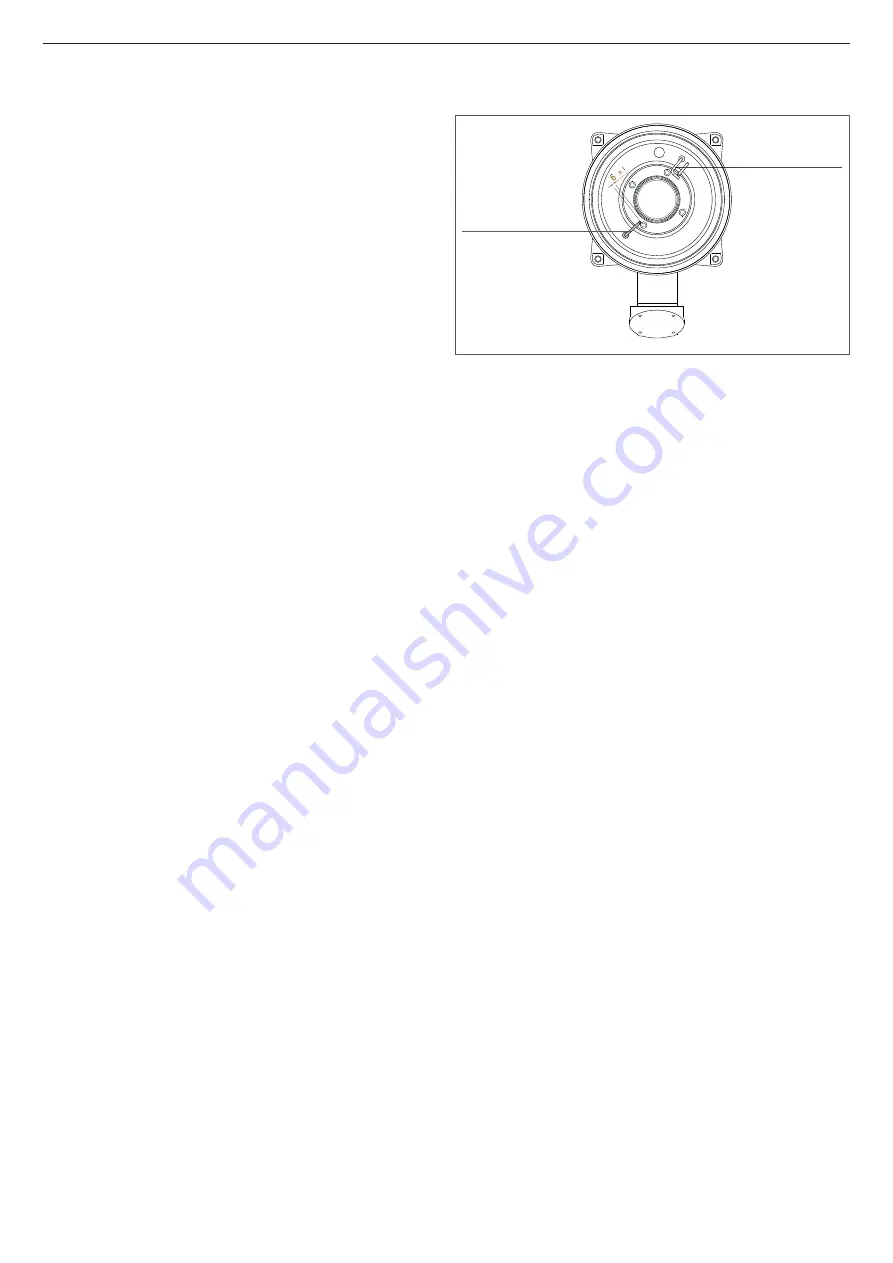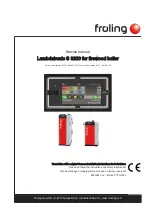
25
ENGLISH
Cleaning the primary heat exchanger (Fig. 21)
- Switch off the electrical supply by turning the system's main switch to "Off".
- Close the gas shut-off valve.
- Remove the casing as indicated in the paragraph "3.12 Removing the casing".
- Disconnect the connecting cables of the electrodes.
- Disconnect the power cables of the fan.
- Take out the clip (A) of the mixer.
- Loosen the nut of the gas train (B).
- Take out and turn the gas train.
- Remove the 4 nuts (C) that fix the combustion unit.
- Take out the air/gas conveyor assembly including the fan and mixer, being careful not to
damage the insulating panel and the electrodes.
- Remove the siphon connecting pipe from the condensate drain fitting of the heat
exchanger and connect a temporary collecting pipe. At this point proceed with the heat
exchanger cleaning operations.
- Vacuum out any dirt residues inside the heat exchanger, being careful NOT to damage
the retarder insulating panel.
- Clean the coils of the heat exchanger with a soft bristled brush.
b
DO NOT USE METAL BRUSHES THAT COULD DAMAGE THE COMPONENTS
- Clean the spaces between the coils using 0.4 mm thick blade, also available in a kit.
- Vacuum away any residues produced by the cleaning
- Rinse with water, being careful NOT to damage the retarder insulating panel
- Make sure the retarder insulation panel is undamaged and replace it if necessary
following the relative procedure.
- Once the cleaning operations are finished, carefully reassemble all the components,
following the above instructions in the reverse order.
- To close the fixing nuts of the air/gas conveyor assembly, use a tightening torque of 8 Nm.
- Turn the power and gas feeding to the boiler back on.
b
If there are obstinate combustion products on the surface of the heat exchanger,
clean by spraying natural white vinegar, being careful NOT to damage the retarder
insulating panel.
- Leave it to work for a few minutes
- Clean the coils of the heat exchanger with a soft bristled brush.
b
DO NOT USE METAL BRUSHES THAT COULD DAMAGE THE COMPONENTS
- Rinse with water, being careful NOT to damage the retarder insulating panel
- Turn the power and gas feeding to the boiler back on.
Cleaning the burner
(Fig. 21)
:
- Switch off the electrical supply by turning the system's main switch to "Off".
- Close the gas shut-off valve.
- Remove the casing as indicated in the paragraph "3.12 Removing the casing".
- Disconnect the connecting cables of the electrodes.
- Disconnect the power cables of the fan.
- Take out the clip (A) of the mixer.
- Loosen the nut of the gas train (B).
- Take out and turn the gas train.
- Remove the 4 nuts (C) that fix the combustion unit
- Take out the air/gas conveyor assembly including the fan and mixer, being careful not
to damage the ceramic panel and the electrodes. At this point proceed with the burner
cleaning operations.
- Clean the burner with a soft bristled brush, being careful not to damage the insulating
panel and the electrodes.
b
DO NOT USE METAL BRUSHES THAT COULD DAMAGE THE COMPONENTS.
- Check that the burner insulating panel and the sealing gasket are undamaged and
replace them if necessary, following the relative procedure.
- Once the cleaning operations are finished, carefully reassemble all the components,
following the above instructions in the reverse order.
- To close the fixing nuts of the air/gas conveyor assembly, use a tightening torque of 8 Nm.
- Turn the power and gas feeding to the boiler back on.
Cleaning the siphon
- Remove the syphon as indicated in the section "Removing the siphon".
- Clean the siphon, it can be washed with detergent water.
- Wash the SRD device making water circulate from the discharge attachment. Never use
metal or pointed tools to remove deposits or residues inside the device, which could
damage it.
- After the cleaning operations, reassemble the siphon and the SRD device, taking care to
fit the components with due care.
b
Having cleaned the siphon and the SRD device, the siphon must be filled with
water ("3.17 Condensate siphon") before starting the boiler again. At the end of the
maintenance operations on the siphon and the SRD device we recommend run the
boiler in condensate regime for a few minutes and check there are no leaks from the
entire condensate evacuation line.
Maintenance of the ionisation electrode
The detector electrode/ionisation probe play an important role in the boiler ignition phase
and maintaining an efficient combustion; in this regard, if it is replaced, it must always be
positioned correctly and the reference position indicated in the figure must be complied with.
detector electrode/
ionisation sensor
flame ignition
electrode
a
Do not sandpaper the electrode.
b
During the annual maintenance, check the state of wear of the electrode and replace
it if has badly deteriorated.
The removal and eventual replacement of the electrodes, including the ignition electrode,
involves also the replacement of the sealing gaskets.
In order to prevent operating faults, the detector electrode/ionisation probe should be
changed every 5 years since it is subject to wear during the ignition.
Check valve (Fig. 22)
The boiler has a check valve.
To access the check valve:
- remove the fan by unscrewing the 4 screws (D) fixing it to the conveyor
- make sure there are no foreign material deposits on the membrane of the check valve
and if any remove them and checking for damage
- check the valve opens and closes correctly
- re-assemble the components in reverse order, making sure the check valve is put back
in the correct direction.
When there is maintenance work on the check valve make sure that it is positioned correctly
to ensure the system operates correctly and safely.
Removing the siphon (Fig. 23a-b-c-d)
- Switch off the electrical supply by turning the system's main switch to "Off".
- Take out the condensate collection pipe (fig. 23a)
- Unscrew the SRD device (fig. 23b)
- Unscrew the screw (A) and remove the plate (B) as indicated in fig. 23c
- Take out the inside part (C) of the siphon as indicated in fig. 23d.
Once the operations are finished, put back the components in the reverse order to that
described, checking the gasket and sealing OR are correctly positioned.
















































